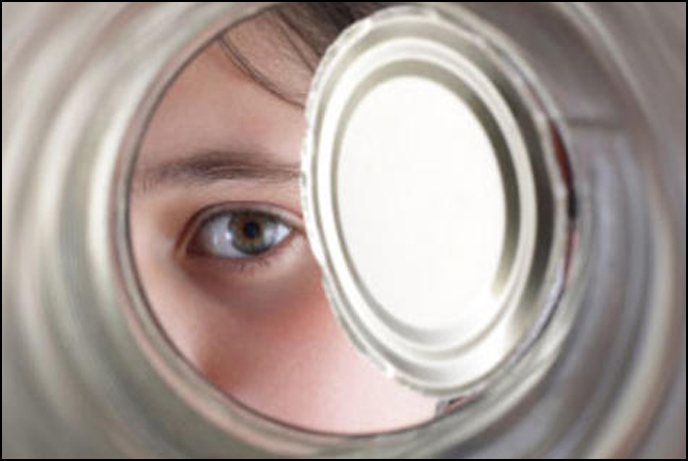

There’s been a lot of talk about concerns over the chemical bisphenol-A or BPA. The FDA concedes that BPA is safe at low levels, but other countries have taken a more cautious approach. Many countries have decided to ban the use of BPA altogether where it comes in contact with food, including Canada, China, the United Arab Emirates, Europe and Malaysa, with others in the works.
Baby bottles and drinking bottles have been the traditional focus, but many of the canned goods we consume also contain a layer of BPA between the metal can and the food or beverage it contains. In fact, for decades, nearly all tin cans have been lined with a plastic containing BPA. This plastic lining makes it possible for food products to maintain their quality and taste, while extending their shelf life. But it comes at a cost. Exposure to BPA is a concern because of possible health effects of BPA on the brain, behavior and prostate glands of fetuses, infants and children.
Here are some tips for avoiding BPA in cans:
1. Seek out BPA-free products – Simply look on the the packaging for labels indicating “BPA-free”. Keep in mind that some, but not all, plastics with recycle codes 3 or 7 may contain BPA. As we “demand with our dollars”, options without BPA, companies will start to offer more alternatives in order to retain customers.
2. Cut back on cans – Reduce your use of canned foods when possible and replace with fresh fruits, vegetables and meats. It is often less expensive to purchase several servings and freeze any leftovers than to purchase canned goods one serving at a time.
3. Avoid heat – The National Institute of Health advises against microwaving polycarbonate plastics or putting them in the dishwasher. The reason? The plastic may break down over time and allow BPA to leach into foods.
4. Use alternatives – Eliminate leaching of BPA into foods by using glass, porcelain or stainless steel containers for hot foods and liquids instead of plastic containers.
5. Don’t forget the beverages – Many beverage cans are lined with BPA. Soft drinks, fruit drinks, energy drinks and even canned beer are often overlooked sources of BPA. Safer alternatives include glass bottles, plastic bottles with recycle codes #1, #2, #4 or #5, or from tetra packs (paper-based cartons). To learn more about plastics and what the recycling codes mean, visit my post on plastics.
Resources:
Mayo Clinic – BPA FAQ
Mother Nature Network – Which food companies do not use BPA-lined cans
TetraPack – All About Tetra Packs
So much awesome info!
So many canned goods are used. I try not to buy them and look for alternatives that say BPA free, but there aren’t that many choices yet. Hopefully companies will realize that they should eliminate this from their products!
Great article with helpful information
You certainly don’t want to unknowingly feed our children these poisons!
The problem is that while many companies are now starting to switch from BPA, the alternatives they are using aren’t any better. They actually are just as harmful. Sadly many people aren’t able to financially afford to buy everything fresh. It’s a sad and vicious circle.
I never thought about BPA’s in canned food. Wow, learning all the time! thanks Norwex team!